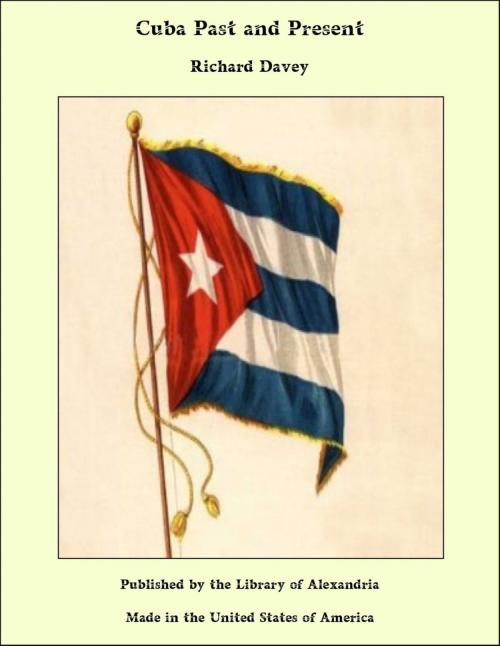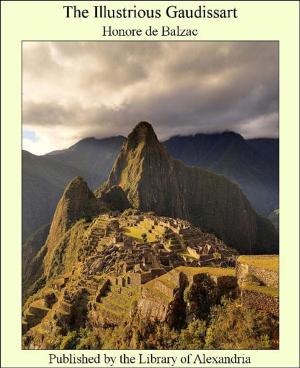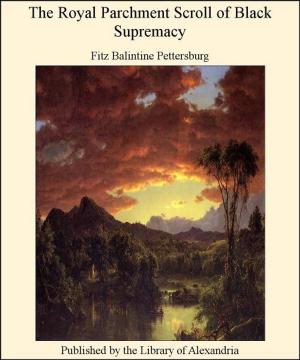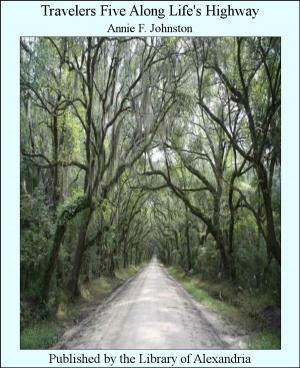| Author: | Richard Davey | ISBN: | 9781465616586 |
| Publisher: | Library of Alexandria | Publication: | March 8, 2015 |
| Imprint: | Language: | English |
| Author: | Richard Davey |
| ISBN: | 9781465616586 |
| Publisher: | Library of Alexandria |
| Publication: | March 8, 2015 |
| Imprint: | |
| Language: | English |
CUBA, "the Pearl of the Antilles" and the key to the Gulf of Mexico, is not only the largest, but the most important and the wealthiest island in the West Indian Archipelago. Its curious shape has been aptly compared to that of a bird's tongue,—a parrot's by preference. From Point Maisi, at one extremity, to Cape San Antonio, at the other, it describes a curve of 900 miles, being, at its greatest breadth, only 120 miles from sea to sea. It is traversed throughout its Eastern province by a range of mountains, which, according to Humboldt, continue under the Ocean, and emerge thence in British Honduras, to receive the somewhat unromantic appellation of the Coxcombe Chain,—another proof, if such were needed, of the fact that, in prehistoric times, this island, together with its numerous neighbours, formed part of the main Continent. The coast of Cuba, on either side beyond the range of the Sierra Maestra, is singularly indented and irregular; and by reason of its innumerable tiny bays, capes, peninsulas, shallows, reefs, "cays," promontories, and islets, presents, on the map, the appearance of a deep curtain fringe. The surface measurement of the island is fully 35,000 square miles. In other words, it is a little bigger than Portugal, or somewhat over a fourth the size of Spain. The Sierra Maestra range rises from the coast, out of the Ocean, with grand abruptness, immediately opposite the sister island of Jamaica. It here presents much the same stately and varied panorama as may be admired on the Genoese Riviera, and, by a series of irregular terraces, reaches the Ojo del Toro, or the "Sources of the Bull," where it suddenly drops towards the centre of the chain, whence it sends up one exceedingly lofty peak, the Pico Turquino, rising 6900 feet above the sea. From this point the range diminishes in height again, until it reaches the valley of the Cauto River, whence it runs in a straight line to Santiago de Cuba, after which it rapidly declines in height, and loses itself in the unwholesome Guananamo Marshes. A section of this range is popularly known, on account of its mineral wealth, as the Sierra de Cobre, or Copper Chain. Its principal peak, La Gran Piedra, so called from a huge block of conglomerate perched upon its extreme summit, is about 5200 feet high. None of the numerous peaks and crags of the Sierra Maestra and the Cobre Ranges show the least trace of recent volcanic eruption, although limestone is found high up among the mountains, and alarming earthquakes are of frequent occurrence, notably in the province of Santiago. At the eastern extremity of the island are a number of isolated mountains, linked together by low-lying hills. Two other ranges of hills exist, in the neighbourhood of Matanzas, and at the back of Havana, but although they present an imposing appearance from the seaboard, at no single point do they exceed a height of 1000 feet. The mountain ranges occupy about one-third of the island; the other two-thirds are more or less spreading and fairly well cultivated plains and level valleys, but even these fertile regions are broken by lagoons and marshes, like those in the Campagna.
CUBA, "the Pearl of the Antilles" and the key to the Gulf of Mexico, is not only the largest, but the most important and the wealthiest island in the West Indian Archipelago. Its curious shape has been aptly compared to that of a bird's tongue,—a parrot's by preference. From Point Maisi, at one extremity, to Cape San Antonio, at the other, it describes a curve of 900 miles, being, at its greatest breadth, only 120 miles from sea to sea. It is traversed throughout its Eastern province by a range of mountains, which, according to Humboldt, continue under the Ocean, and emerge thence in British Honduras, to receive the somewhat unromantic appellation of the Coxcombe Chain,—another proof, if such were needed, of the fact that, in prehistoric times, this island, together with its numerous neighbours, formed part of the main Continent. The coast of Cuba, on either side beyond the range of the Sierra Maestra, is singularly indented and irregular; and by reason of its innumerable tiny bays, capes, peninsulas, shallows, reefs, "cays," promontories, and islets, presents, on the map, the appearance of a deep curtain fringe. The surface measurement of the island is fully 35,000 square miles. In other words, it is a little bigger than Portugal, or somewhat over a fourth the size of Spain. The Sierra Maestra range rises from the coast, out of the Ocean, with grand abruptness, immediately opposite the sister island of Jamaica. It here presents much the same stately and varied panorama as may be admired on the Genoese Riviera, and, by a series of irregular terraces, reaches the Ojo del Toro, or the "Sources of the Bull," where it suddenly drops towards the centre of the chain, whence it sends up one exceedingly lofty peak, the Pico Turquino, rising 6900 feet above the sea. From this point the range diminishes in height again, until it reaches the valley of the Cauto River, whence it runs in a straight line to Santiago de Cuba, after which it rapidly declines in height, and loses itself in the unwholesome Guananamo Marshes. A section of this range is popularly known, on account of its mineral wealth, as the Sierra de Cobre, or Copper Chain. Its principal peak, La Gran Piedra, so called from a huge block of conglomerate perched upon its extreme summit, is about 5200 feet high. None of the numerous peaks and crags of the Sierra Maestra and the Cobre Ranges show the least trace of recent volcanic eruption, although limestone is found high up among the mountains, and alarming earthquakes are of frequent occurrence, notably in the province of Santiago. At the eastern extremity of the island are a number of isolated mountains, linked together by low-lying hills. Two other ranges of hills exist, in the neighbourhood of Matanzas, and at the back of Havana, but although they present an imposing appearance from the seaboard, at no single point do they exceed a height of 1000 feet. The mountain ranges occupy about one-third of the island; the other two-thirds are more or less spreading and fairly well cultivated plains and level valleys, but even these fertile regions are broken by lagoons and marshes, like those in the Campagna.















